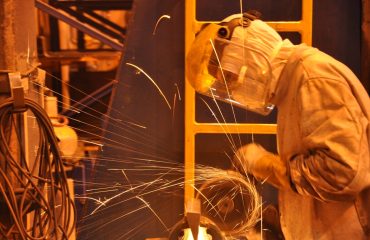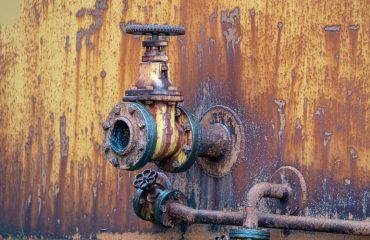The European Union’s CE marking is not merely a tick-box exercise; it’s a crucial testament to a product’s safety, health, and environmental compliance. For steel manufacturers and suppliers aiming to access the vast European market, understanding and adhering to the CE certification procedures is paramount. This comprehensive guide unravels the complexities involved, providing a clear pathway to achieving CE conformity for your steel products.
1. Understanding the CE Marking and its Significance for Steel
The CE marking (Conformité Européenne) is a mandatory conformity marking for many products sold within the European Economic Area (EEA). It signifies that the product meets the essential requirements of relevant EU directives and regulations. For steel products, this often involves directives related to construction products (CPR), machinery, pressure equipment, and more, depending on the specific application of the steel. The CE marking isn’t a quality mark in itself; rather, it demonstrates that the product complies with the essential safety and performance requirements laid out in the applicable harmonized European standards (EN standards).
The significance of CE marking for steel is substantial. Without it, your steel products cannot be legally sold within the EEA. This means lost market access and potential hefty fines. Furthermore, the CE marking provides a crucial level of consumer trust, assuring buyers that the steel meets specific safety and quality standards. It also simplifies trade within the EEA, reducing bureaucratic hurdles.
2. Identifying the Relevant European Standards (EN Standards) for Your Steel
The foundation of CE certification lies in identifying and complying with the relevant harmonized European standards (EN standards). These standards specify the technical requirements that steel products must meet to achieve CE conformity. The specific EN standards applicable will vary considerably depending on the type of steel, its intended use, and its final application. For instance, construction steel will have different requirements compared to steel used in machinery or pressure vessels.
Determining the correct EN standards requires careful examination of the product’s intended use and the relevant EU directives. Consulting with experts or referencing official EU databases can be invaluable in this process. Failure to identify and comply with the correct standards can lead to rejection of the CE certification application.
3. The Role of Notified Bodies in Steel CE Certification
For many steel products, involvement of a Notified Body is mandatory for CE certification. Notified Bodies are independent organizations designated by a Member State to assess the conformity of products against the relevant EU directives and standards. They conduct audits, inspections, and tests to verify that the manufacturer’s quality management system and the steel products themselves meet the required standards.
The specific role of the Notified Body depends on the chosen conformity assessment procedure. This could involve factory production control audits, type examination, and product testing. Selecting a reputable and accredited Notified Body is crucial. Their expertise and impartiality ensure the integrity of the CE certification process. Choosing a Notified Body that specializes in steel products is recommended to ensure a smooth and efficient process.
4. The Conformity Assessment Procedures for Steel Products
Several conformity assessment procedures exist, each with varying levels of Notified Body involvement. The choice depends on the product’s risk classification and the relevant legislation. Common procedures include:
- Module A: Internal Production Control: The manufacturer ensures conformity through internal processes. Suitable for low-risk products.
- Module B: Type Examination: A Notified Body examines a representative sample of the product to verify conformity. Often used for medium-risk products.
- Module C: Production Quality Assurance: The manufacturer’s quality management system is audited by a Notified Body. Suitable for medium-risk products.
- Module D: Production Quality Assurance Plus Product Verification: Combines Module C with additional product verification by the Notified Body. Used for higher-risk products.
- Module E: Product Verification: A Notified Body verifies the conformity of samples from the production line. Often used for higher-risk products.
- Module F: Product Verification Plus Surveillance: Combines Module E with regular surveillance by the Notified Body. Used for high-risk products.
Understanding the appropriate procedure is essential to ensure compliance and avoid delays. The selected procedure should be clearly documented in the technical file.
5. Maintaining CE Conformity and Ongoing Compliance
Achieving CE certification is just the first step. Maintaining ongoing compliance is equally crucial. This requires continuous monitoring of the manufacturing process, regular internal audits, and adherence to the relevant EN standards. The manufacturer must also retain comprehensive documentation, including the technical file, test reports, and certificates, for a specified period. Regular surveillance audits by the Notified Body may also be required, depending on the chosen conformity assessment procedure.
Changes to the manufacturing process or product design may necessitate reassessment and potentially a re-certification process. Keeping abreast of changes in EU legislation and standards is also vital to ensure ongoing compliance and maintain the validity of the CE marking.
Successfully navigating the CE certification process for steel products requires careful planning, attention to detail, and a thorough understanding of the relevant regulations and standards. By following these steps and seeking expert advice when needed, steel manufacturers can confidently access the European market and build trust with their customers.
SEO Tags: CE marking, steel certification, steel compliance, European conformity, EN standards




